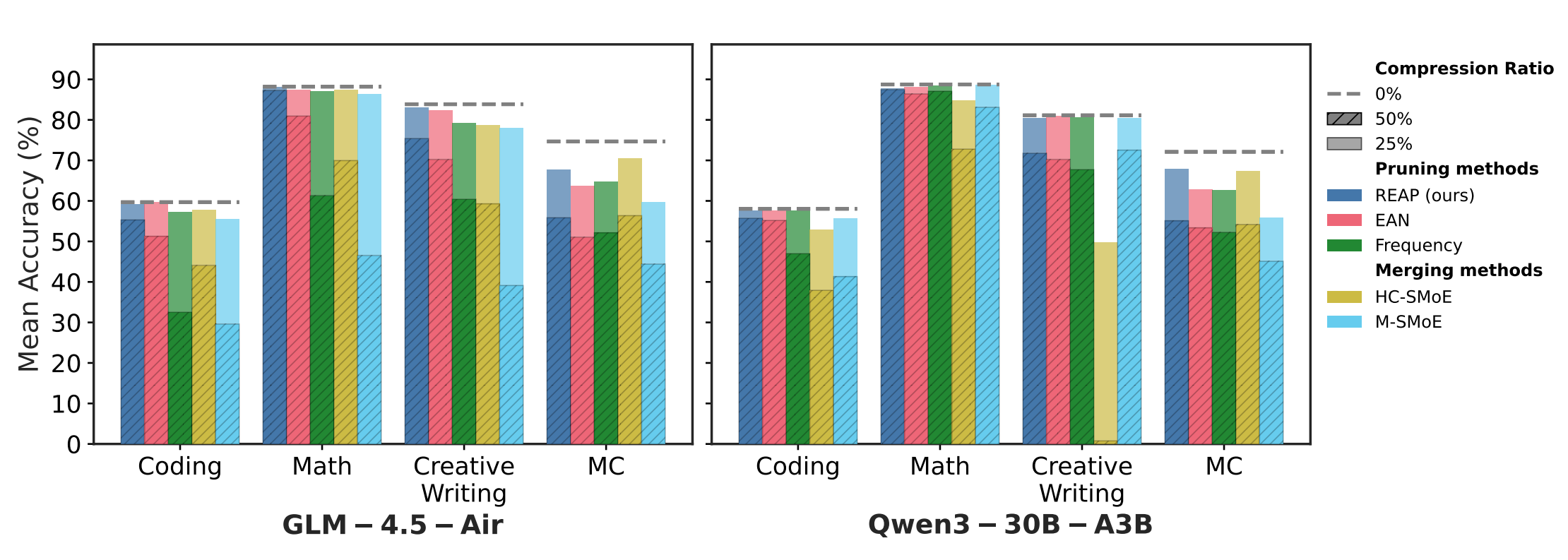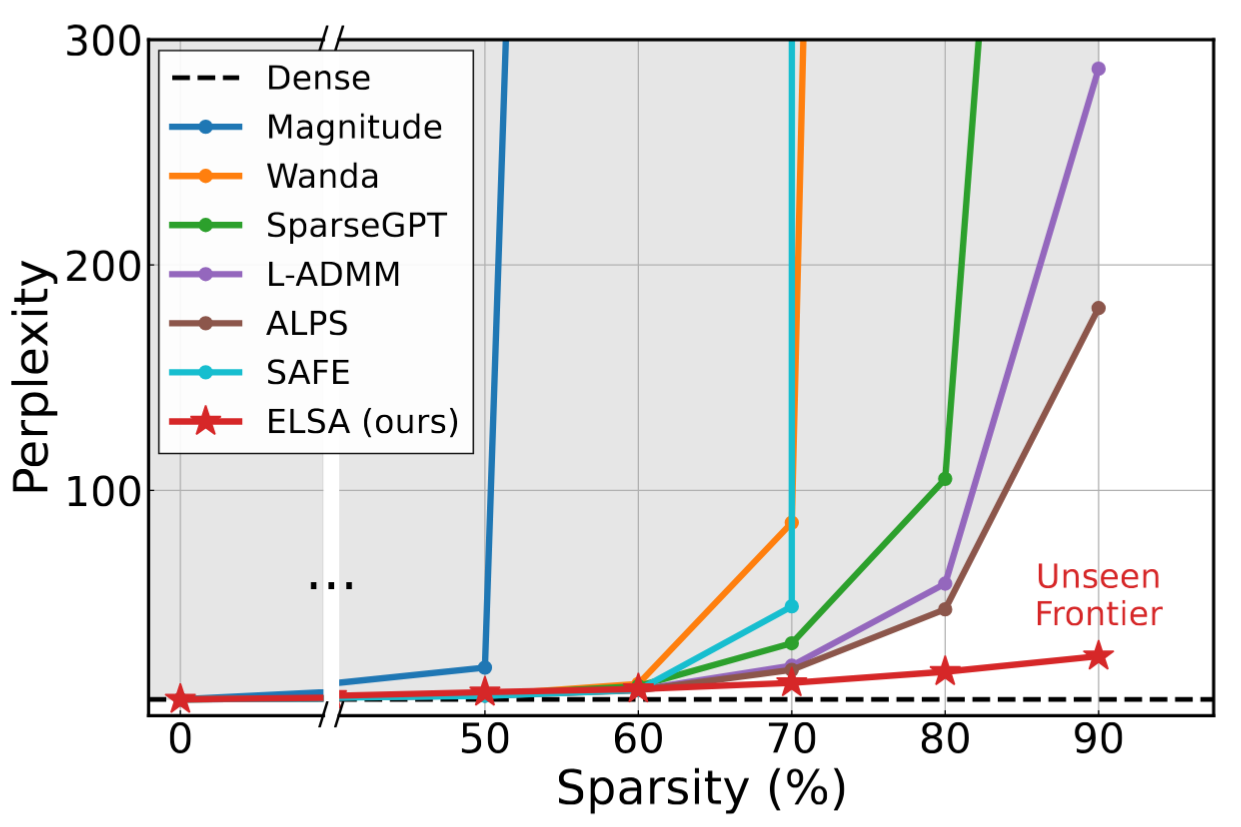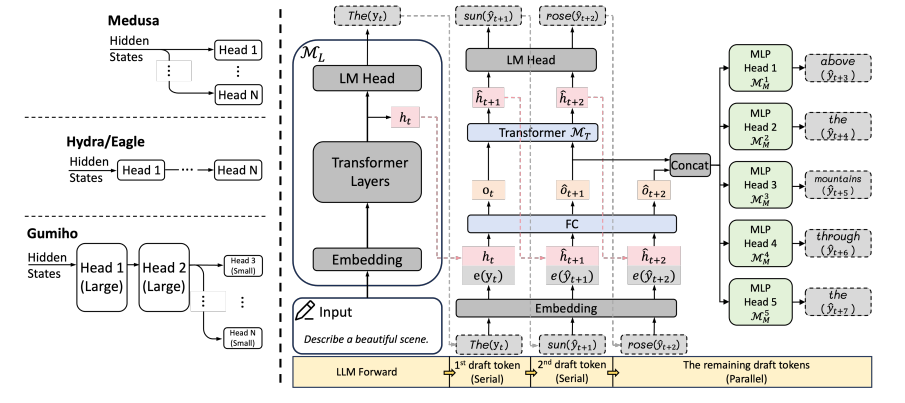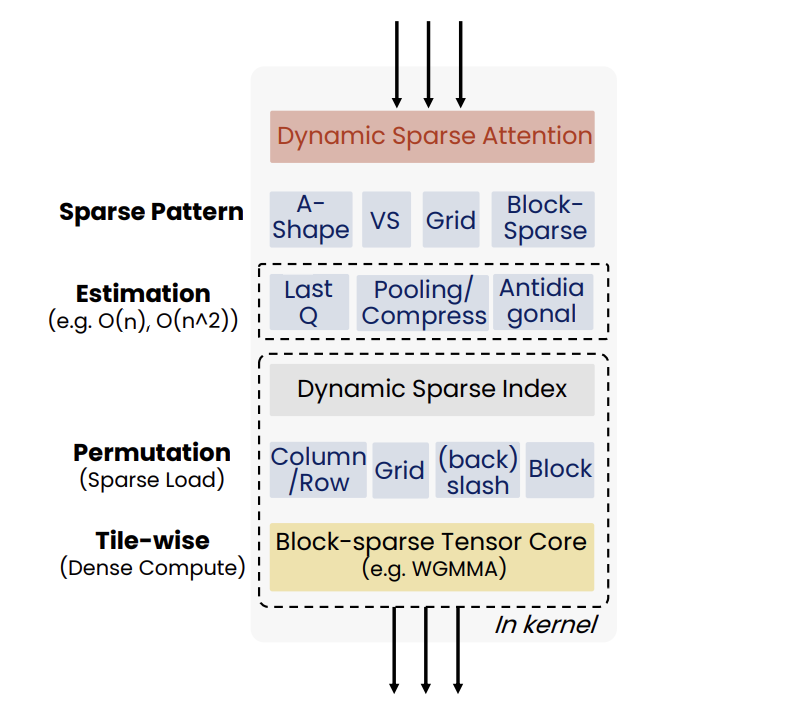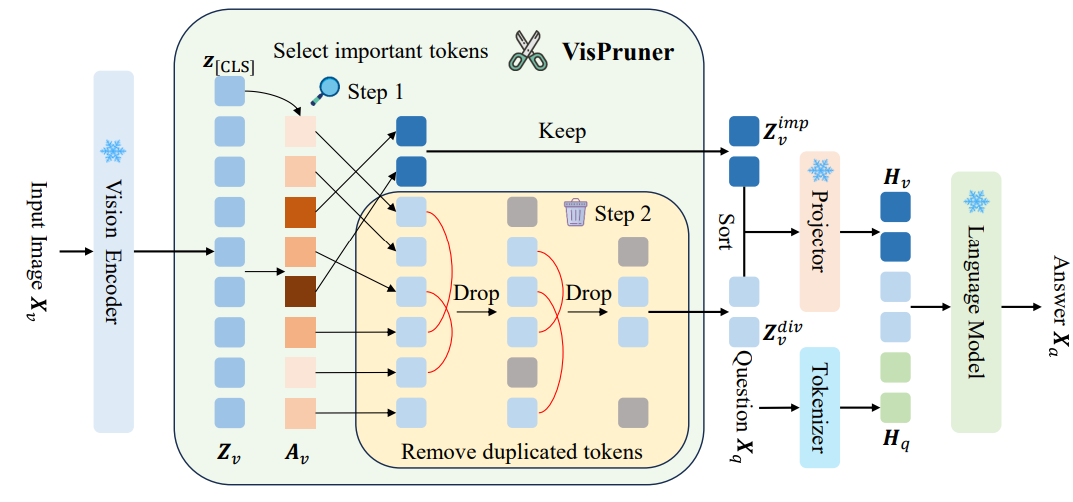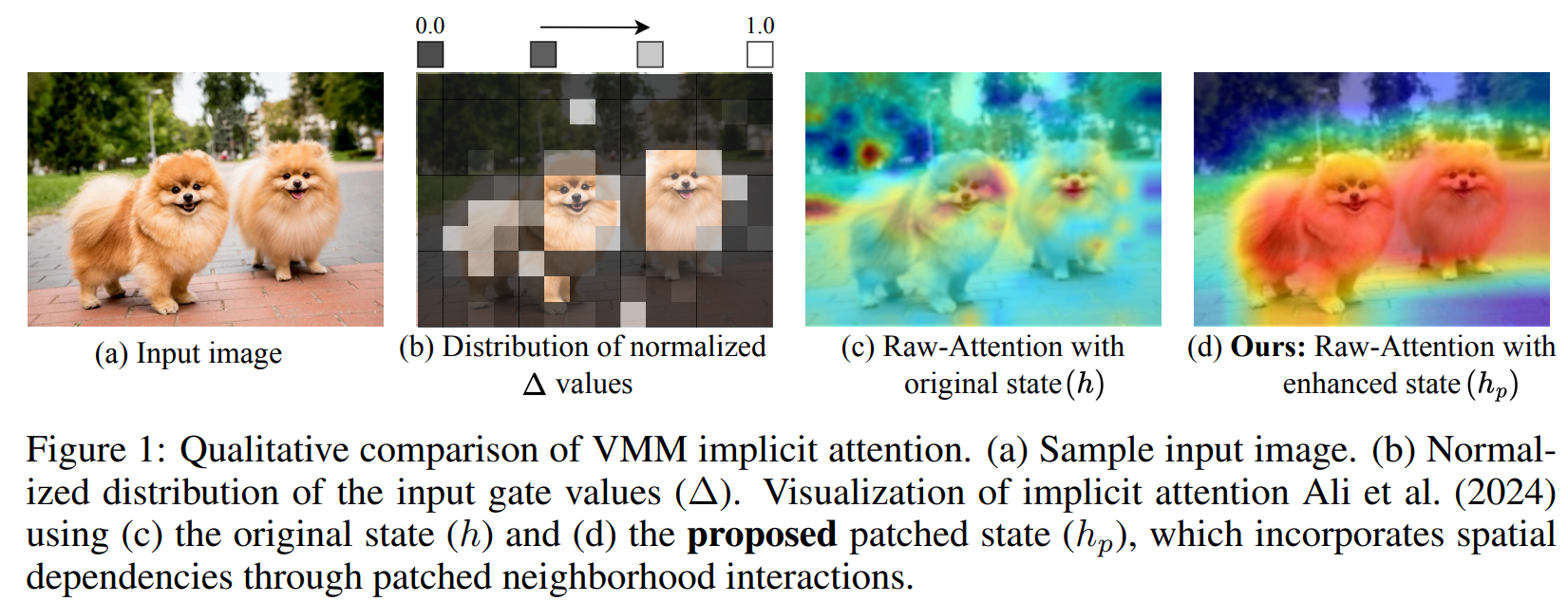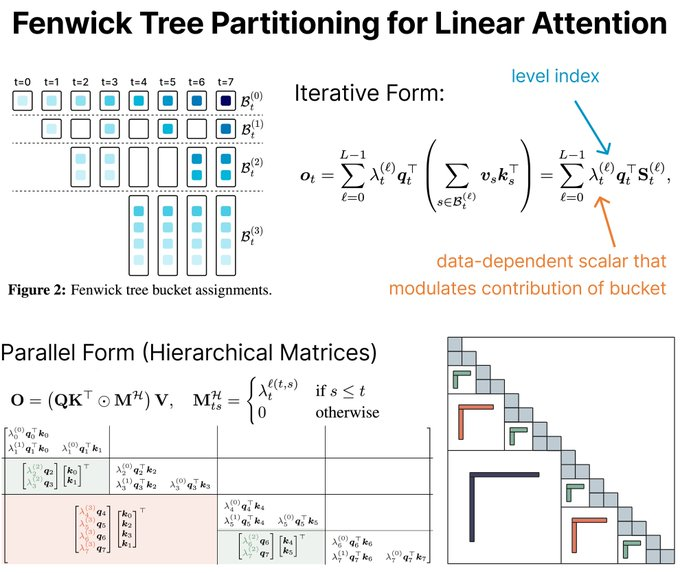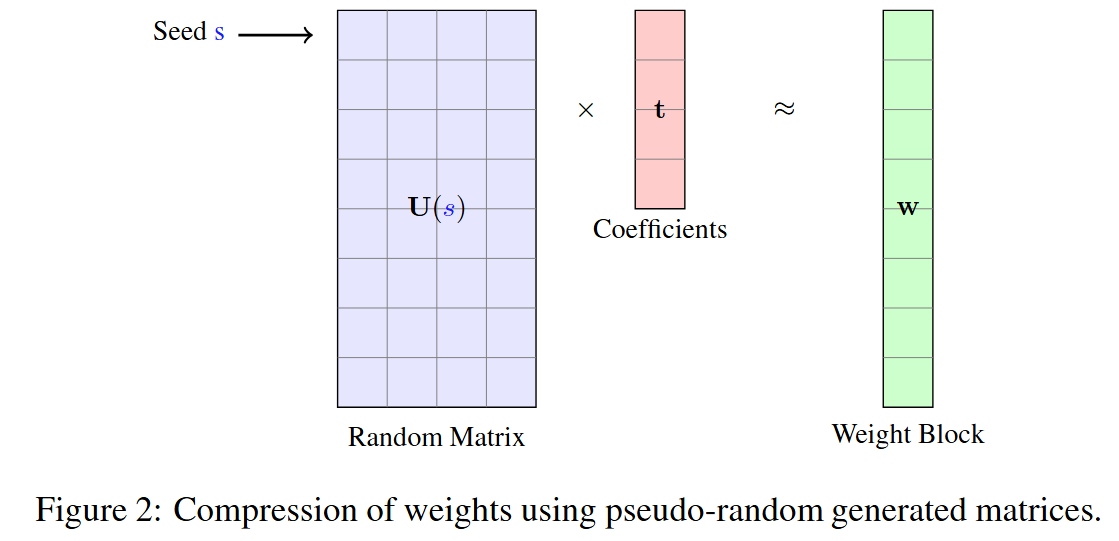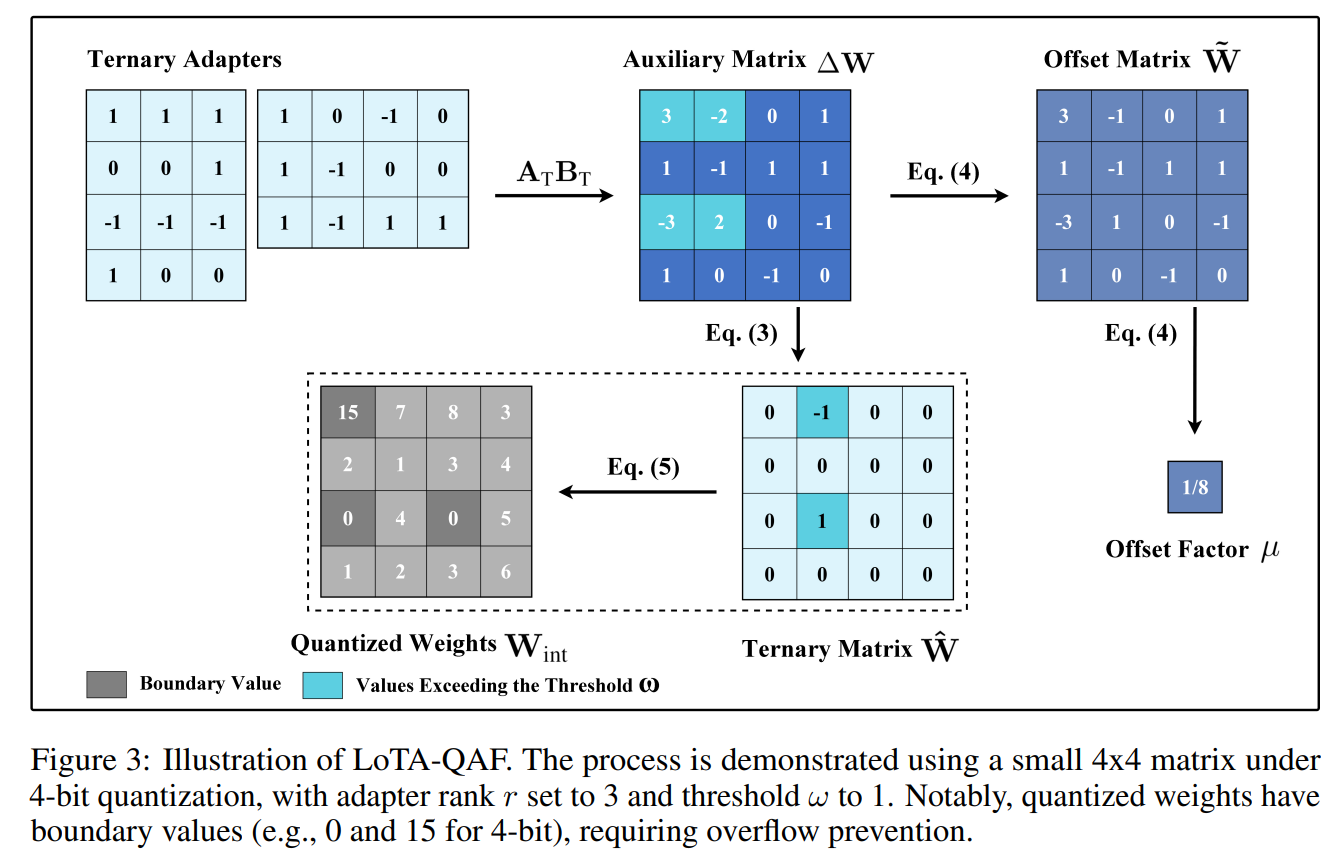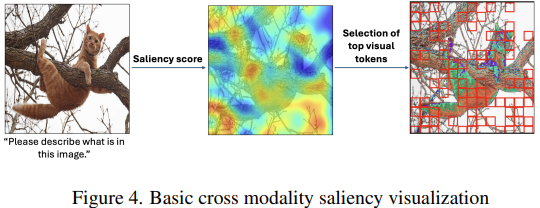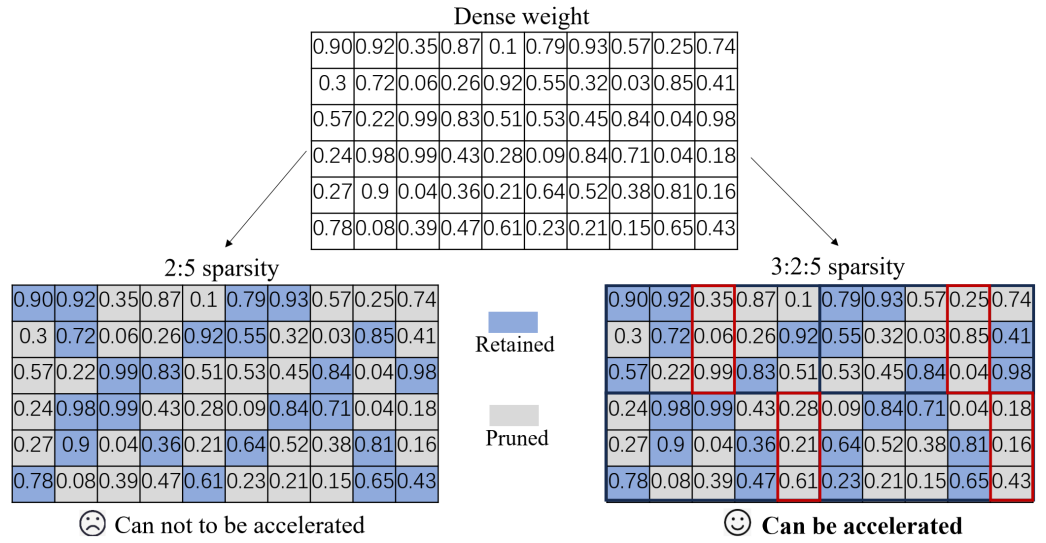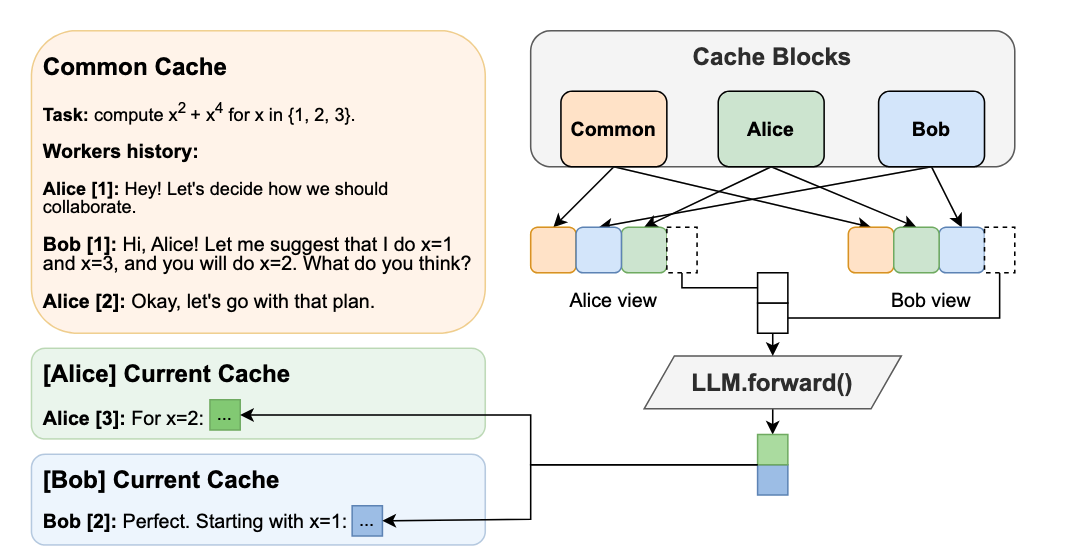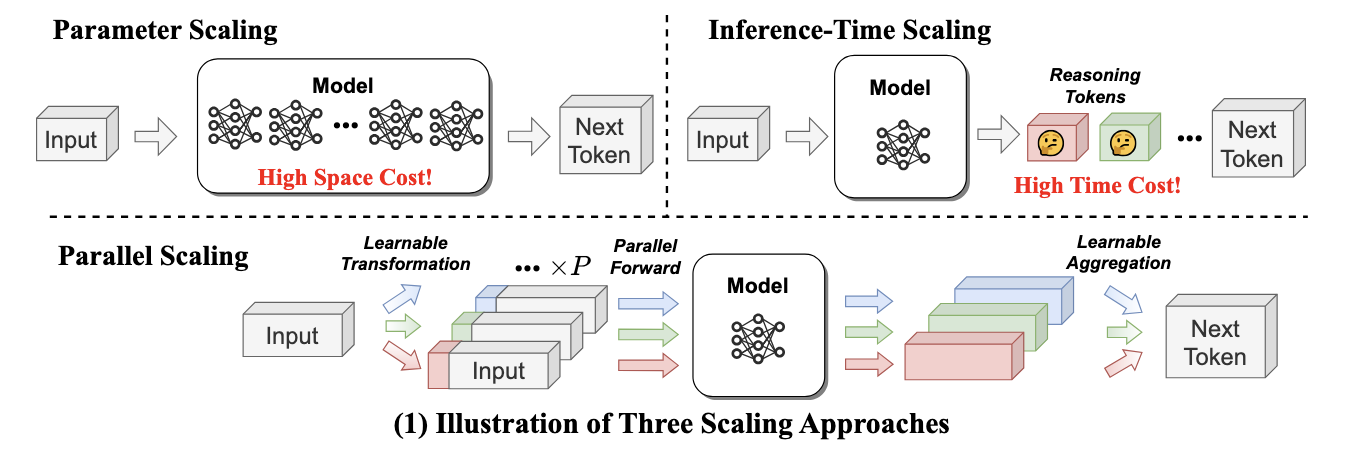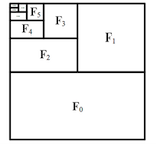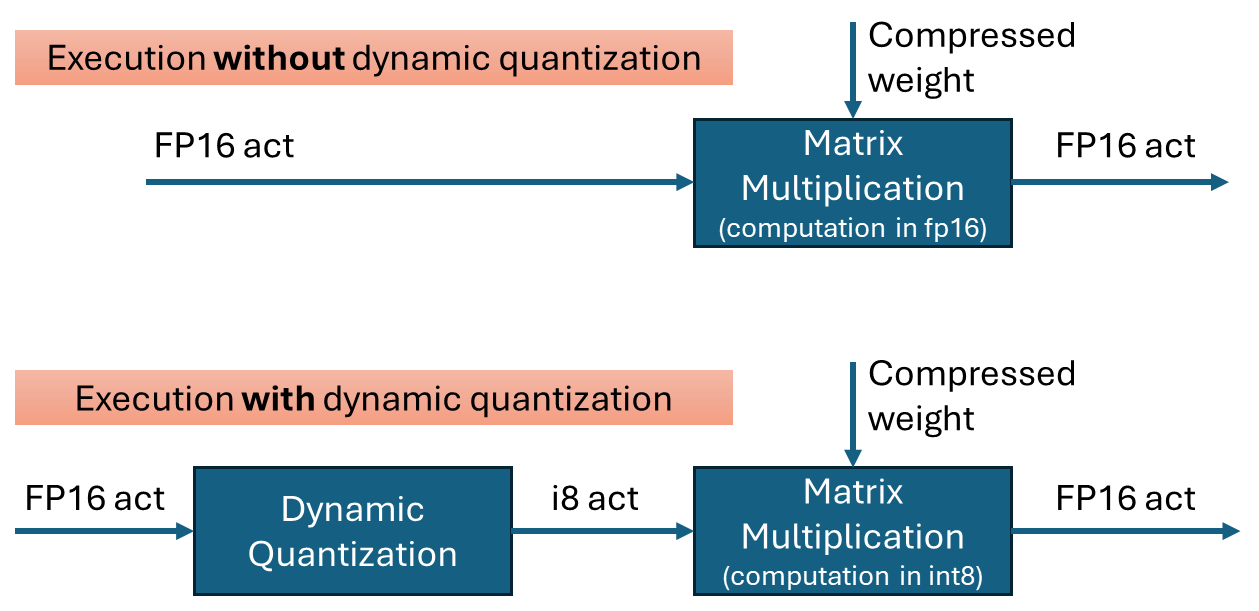Q3'22: Technology update – low precision and model optimization
Authors
Alexander Kozlov, Pablo Munoz, Vui Seng Chua, Nikolay Lyalyushkin, Yury Gorbachev, Nilesh Jain
Summary
We would characterize this quarter as “let’s go beyond INT8inference”. This quote is about “ANT”, a paper that you can find in theHighlights and that introduces 4-bit data type for accurate model inferencewhich fits well with the current HW architectures. There is also a lot of hypearound FP8 precisions that are already available in the latest Nvidia Hopperarchitecture and are being planned to be added into the next generations of Intel HW.
Highlights
- ANT: Exploiting Adaptive Numerical Data Type for Low-bit Deep Neural Network Quantization by Microsoft Research and universities of China and US (https://arxiv.org/pdf/2208.14286.pdf). A very interesting read about a new data type for model inference which authors called flint and which combines the advantages of float and int. They proposed an encoding/decoding scheme for this type as well as the implementation of computational primitives that are based on the existing DL HW architectures. Authors also evaluate the computational efficiency of the type and show the accuracy of using it for inference on a diverse set of models.
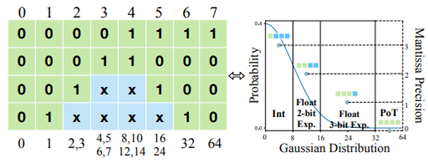
- LLM.int8(): 8-bit Matrix Multiplication for Transformers at Scale by the collaboration of Facebook, HuggingFace and universities (https://arxiv.org/pdf/2208.07339v1.pdf). The main idea of the proposed method is to split matrix multiplication operation (MatMul) which is the main operation of Transformer-based models into two separate MatMuls. The one is quantized to 8-bits and another is kept to FP16 precision. The result of both operations is summed. This mixed-precision decomposition for MatMul is based on a magnitude criterium. The authors achieved good results in accelerating of Transformer models on Nvidia GPUs. Code is available at: https://github.com/TimDettmers/bitsandbytes.
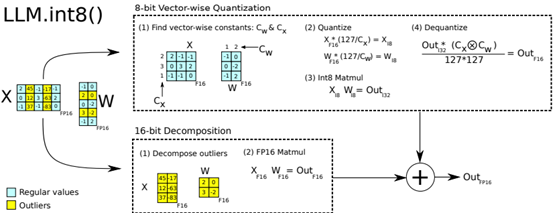
- CPrune: Compiler-Informed Model Pruning for Efficient Target-Aware DNN Execution by University of Colorado Boulder and Electronics and Telecommunications Research Institute (https://arxiv.org/pdf/2207.01260.pdf). The paper proposes a method, which incorporates the information extracted during the compiler optimization process into creating a target-oriented compressed model fulfilling accuracy requirements. This information also reduces the search space for parameter tuning. The code is available at: https://github.com/taehokim20/CPrune.
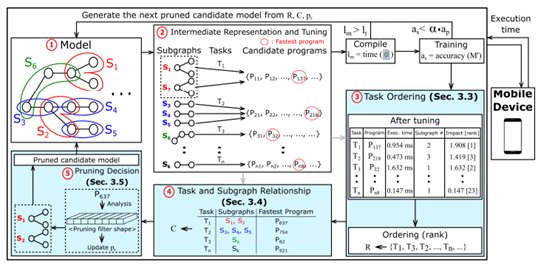
- UniNet: Unified Architecture Search with Convolution, Transformer, and MLP by MMLab and SenseTime (https://arxiv.org/pdf/2207.05420.pdf). Authors construct the search space and study the learnable combination of convolution, transformer, and MLP integrating it into an RL-based search algorithm. They conclude that: (1) placing convolutions in the shallow layers and transformers in the deep layers, (2) allocating a similar amount of FLOPs for both convolutions and transformers, and (3) inserting a convolution-based block to downsample for convolutions and a transformer-based block for transformers. The best model achieves 87.4% top1 on ImageNet outperforming Swin-L. Code will be available at https://github.com/Sense-X/UniNet.

Papers with notable results
Quantization
- I-ViT: Integer-only Quantization for Efficient Vision Transformer Inference by universities of China (https://arxiv.org/pdf/2207.01405.pdf). Authors propose efficient approximations of non-linear functions of Transformer architecture, namely Softmax, GeLU, and LayerNorm. These approximations are used to get the integer-only computational graph. They applied the proposed method to several vision Transformer models and get close to 4x speedup when going from FP32 to INT8 computations. To get the quantized model authors used a straightforward quantization-aware training method. For all the models they got a little worse or even better accuracy.
- Sub 8-Bit Quantization of Streaming Keyword Spotting Models for Embedded Chipsets by Alexa, Amazon (https://arxiv.org/pdf/2207.06920.pdf). Some practical work on the quantization of the Keyword Spotting language models. Authors used a 2-stage QAT algorithm: for the 1st-stage, they adapt a non-linear quantization method on weights, while for the 2nd-stage, we use linear quantization methods on other components of the network. The method has been used to improve the efficiency on ARM NEON architecture, where authors obtain up to 3 times improvement in CPU consumption and more than 4 times improvement in memory consumption.
- CADyQ: Content-Aware Dynamic Quantization for Image Super-Resolution by universities of South Korea and Nvidia (https://arxiv.org/pdf/2207.10345.pdf). A practical study of applying low bit-width mixed-precision quantization to Super Resolution models. Authors proposed a pipeline of selecting different bit-width for each patch and layer of the model by adding a lightweight bit selector module that is conditioned on the estimated quantization sensitivity. They also introduce a new to find a better balance between the computational complexity and overall restoration performance. The method shows good accuracy and performance results measured on T4 GPU using 8-bit and 4-bit arithmetic. Code is available at: https://github.com/Cheeun/CADyQ.
- Bitwidth-Adaptive Quantization-Aware Neural Network Training: A Meta-Learning Approach by universities of South Korea (https://arxiv.org/pdf/2207.10188.pdf). The paper proposes a method of bitwidth-adaptive quantization aware training (QAT) where meta-learning is effectively combined with QAT by redefining meta-learning tasks to incorporate bitwidths. The method trained model to be quantized to any candidate bitwidth with minimal inference accuracy drop. The paper provides some insight on how optimization can be done in the scenarios such as Iterative Learning, task adaptation, etc.
- Efficient Activation Quantization via Adaptive Rounding Border for Post-Training Quantization by Microsoft Research and universities of Shanghai (https://arxiv.org/pdf/2208.11945.pdf). The authors explore the benefits of adjusting rounding schemes of providing a new perspective for the post-training quantization. They design a border function that produces unbiased elementwise errors and makes it can adjust to specific activations to generate adaptive rounding schemes. They experiment with ImageNet models and get promising results for 4-bit and even 2-bit quantization schemes in the post-training setup.
- FP8 Quantization: The Power of the Exponent by Qualcomm AI Research (https://arxiv.org/pdf/2208.09225.pdf). This paper investigated the PTQ and QAT efficacy of FP8 schemes by varying bit-length of Mantissa (M) and Exponent(E) and exponent bias flexibility (per channel/tensor) across a wide range of convolutional and transformer topologies and tasks. The authors concluded that multi-FP8 formats are required for translating FP-trained deep networks due to model-specific optimal dynamic range and precision trade-off. Networks (BERT, ViT, SalsaNext, HRNet) with outlying dynamic ranges require more exponent bits whereas convnets require more mantissa bits for precision. FP8 formats are also more friendly for PTQ as compared to Int8.
Pruning
- CAP: instance complexity-aware network pruning by universities of China (https://arxiv.org/pdf/2209.03534.pdf). Authors exploit the difference of instance complexity between the datase samples to boost the accuracy of pruning method. They introduce a new regularizer on the soft masks of filters, the masks of important filters are pushed towards 1 and those of redundant filters are pushed towards 0, thus a sweet spot can be easily found to separate the two parts of filters. It helped to achieve compelling results in sparsity, e.g. prune 87.75% FLOPs of ResNet50 with 0.89% top-1 accuracy loss.
- Sparse Attention Acceleration with Synergistic In-Memory Pruning and On-Chip Recomputation by Google Brain and University of California (https://arxiv.org/pdf/2209.00606.pdf). The paper proposes a HW accelerator that leverages the inherent parallelism of ReRAM crossbar arrays to compute attention scores in an approximate manner. It prunes the low attention scores using a lightweight analog thresholding circuitry within ReRAM, enabling it to fetch only a small subset of relevant data to on-chip memory. To mitigate potential negative repercussions for model accuracy, the accelerator re-computes the attention scores for the few-fetched data in digital. The combined in-memory pruning and on-chip recompute of the relevant attention scores enables transforming quadratic complexity to a merely linear one. This yields 7.5x speedup and 19.6x energy reduction when total 16KB on-chip memory is used.
- OPTIMAL BRAIN COMPRESSION: A FRAMEWORK FOR ACCURATE POST-TRAINING QUANTIZATION AND PRUNING by IST Austria & Neural Magic (https://arxiv.org/pdf/2208.11580.pdf). The paper introduces a compression framework that covers both weight pruning and quantization in a post-training setting. At the technical level, the approach is based on the first exact and efficient realization of the classical Optimal Brain Surgeon (OBS) framework at the scale of modern DNNs, which we further extend to cover weight quantization. Experimental results show it can enable the accurate joint application of both pruning and quantization at post-training.
Neural Architecture Search
- You Only Search Once: On Lightweight Differentiable Architecture Search for Resource-Constrained Embedded Platforms by universities of Singapore (https://arxiv.org/pdf/2208.14446.pdf). The paper introduces an accurate predictor to estimate the latency of the architecture (𝑎𝑟𝑐ℎ). The arch is encoded with a sparse matrix 𝛼 ∈ {0, 1} 𝐿×𝐾, where the element indicates that the 𝑘-th operator is reserved for the 𝑙-th layer of 𝑎𝑟𝑐ℎ. The latency predictor is an MLP model (3 FC layers) where the input is a flattened 𝛼. The authors also propose a lightweight differentiable search method to reduce the optimization complexity to the single-path level. They compare with other popular methods such as OFA, MNAS, FBNAS, etc., and report superior results. The code is available here: https://github.com/stepbuystep/LightNAS.
- SenseTime Research 2 Shanghai AI Lab 3Australian National University by SenseTime Research Shanghai AI Lab and Australian National University (https://arxiv.org/pdf/2207.13955.pdf). Authors employ NAS for searching for a representative model based on the cosFormer architecture. They propose a new usage of attention, namely mixing Softmax attention and linear attention in the Transformer, and define a new search space for attention search in the NAS framework. The proposed mixed attention achieves a better balance between accuracy and efficiency, i.e., having comparable performance to the standard Transformer while maintaining good efficiency.
- NASRec: Weight Sharing Neural Architecture Search for Recommender Systems by Meta AI, Duke University, and University of Houston (https://arxiv.org/pdf/2207.07187.pdf). Authors propose a paradigm to scale up automated modeling of recommender systems. The method establishes a supernet with minimal human priors, overcoming data modality and architecture heterogeneity challenges in the recommendation domain. Authors advance weight-sharing NAS to the recommendation domain by introducing single-operator any-connection sampling, operator balancing interaction modules, and post-training fine-tuning. The method outperforms both manually crafted models and models discovered by NAS methods with smaller search cost.
- Tiered Pruning For Efficient Differentiable inference-aware Neural Architecture search by NVidia (https://arxiv.org/pdf/2209.11785.pdf). Authors propose three pruning techniques to improve the cost and results of Differentiable Neural Architecture Search (DNAS). Instead of evaluating all possible parameters, they evaluate just two which converge to a single optimal one (e.g. to optimal number of channels in Inverted Residual Blocks). Progressively remove blocks from the search space which are rarely chosen during SuperNet training. Skip connection is not present in the search space at the beginning of search and is inserted after removing the penultimate block of the layer in its place. The proposed algorithm establishes a new state-of-the-art Pareto frontier for NVIDIA V100 in terms of inference latency for ImageNet Top-1 image classification accuracy.
- When, where, and how to add neurons to ANNs (https://arxiv.org/pdf/2202.08539v2.pdf). Authors propose an novel approach to search for neural architectures using structural learning, and in particular neurogenesis. A framework is introduced in which triggers and initializations are used for studying the various facets of neurogenesis: when, where, and how to add neurons during the learning process. The neurogenesis strategies, termed Neural Orthogonality (NORTH*), combine, “layer-wise triggers and initializations based on the orthogonality of activations or weights to dynamically grow performant networks that converge to an efficient size”. The paper offers relevant insights that can be used in more broader Neural Architecture Search frameworks.
Other
- On-Device Training Under 256KB Memory by MIT (https://arxiv.org/pdf/2206.15472.pdf). Authors propose Quantization-Aware Scaling to calibrate the gradient scales and stabilize quantized training. To reduce the memory footprint, they introduce Sparse Update to skip the gradient computation of less important layers and sub-tensors. The algorithm is implemented by a lightweight training system, Tiny Training Engine, which prunes the backward computation graph to support sparse updates and offload the runtime auto-differentiation to compile time. Method is available at: https://github.com/mit-han-lab/tinyengine.
Deep Learning Software
- Efficient Quantized Sparse Matrix Operations on Tensor Cores (https://arxiv.org/pdf/2209.06979.pdf). A high-performance sparse-matrix library for low-precision integers on Tensor cores. Magicube supports SpMM and SDDMM, two major sparse operations in deep learning with mixed precision. Experimental results on an NVIDIA A100 GPU show that Magicube achieves on average 1.44x (up to 2.37x) speedup over the vendor-optimized library for sparse kernels, and 1.43x speedup over the state-of-the-art with a comparable accuracy for end-to-end sparse Transformer inference.
- A BetterTransformer for Fast Transformer Inference. PyTorch introduced the support of new operations that improve inference of Transformer models and can “take advantage of sparsity in the inputs to avoid performing unnecessary operations on padding tokens”.
Deep Learning Hardware
- NVIDIA, Arm, and Intel Publish FP8 Specification for Standardization as an Interchange Format for AI (blog post). The precision is already available in the latest Nvidia Hopper architecture and is planned in all the Intel HW.

.png)





